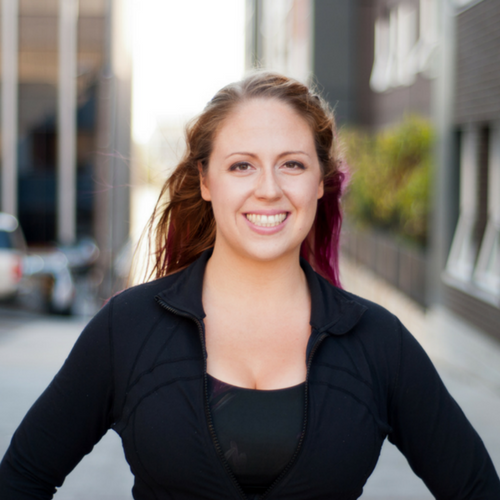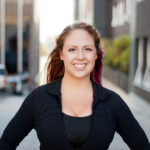Pilates Progressions for the Active Aging Adult
by Nikki Naab-Levy
May 2, 2018
When it comes to mainstream fitness, active aging adults are an underserved population. This is ironic considering that they represent a large demographic and, as a whole, people are getting older and living longer.
Because Pilates has a reputation for being good for our joints with lower impact than traditional exercise options, we are more likely to have older adults seek out our services. I believe we have a beautiful opportunity to serve this group.
Over the past eight years, I’ve had the privilege of teaching my 95-year-old client Rita, who decided to try Pilates after her doctor told her it would potentially give her the strength and balance to avoid using a cane.
While every client is unique, Rita in many ways represents both the ideal and the reality of being 95. She doesn’t have osteoporosis, kyphotic posture, or many of the negative things that we associate with aging. She’s razor sharp, able to drive and walk without assistance, and lives independently. She crochets afghans as gifts for family members. She bakes biscotti from scratch. She can get up and down from the floor.
However, she also has severe arthritis in both knees and neuropathy. This makes it hard to feel her feet, so she is concerned about falling. Going up the stairs is often uncomfortable for her knees, and she has experienced some other health complications.
Many of these issues have required some creativity in how to run a session, because they went beyond what I learned in my original teacher training. It’s also shown me when it can be beneficial to draw from other movement and fitness modalities.
For instance, when Rita lamented no longer being able to lift her KitchenAid mixer, I introduced weight training exercises to help her build arm strength. We had previously been doing arm work with springs, but the increased load dramatically improved her upper body strength.
Along a similar vein, about two years ago, Rita experienced an injury and we wanted to find a functional way to build leg strength. So, we started doing squats at the end of every session. To this day, she says they’re her favorite exercise, because they give her strength to get out of chairs or her car. I also bought a Naboso mat to help with nerve proprioception as part of our standing work. Rita has reported that this makes her feet feel warm and makes it easier to go up the stairs.
Today, our sessions are a blend of traditional Pilates, corrective exercises, weight training, and balance techniques. A typical session includes 30 minutes of Pilates, 10 minutes of corrective exercises, and 20 minutes of dumbbell and balance work.
Some of the key things I keep in mind when working with Rita and her contemporaries are balance, spinal mobility, hip stability, foot mobility, and shoulder strength. Something that I am especially aware of is tibialis anterior strength, because of its connection to fall risk.
Here’s a more specific look at what a session might look like. The equipment we have available is a spring board with a push thru bar, a foam roller, bands, balls, small hand weights, and dumbbells.
Warm up
Side lying:
- Book openers or bow and arrows
- Clamshells or side leg lifts
- Inner thigh lifts
Quadruped:
- Hand knee rocking
- Cat cow
- Swimming prep (also called bird dog)
Supine:
- Shoulder mobility series with 1.5lb hand weights or holding a long TheraBand (protraction and retraction, arm scissors, arm circles, both arms reaching overhead)
- Heel slides
- Toe taps
- Tibialis anterior activation (lie supine with feet towards the tower and the push thru bar suspended on one blue spring. Place the top of the foot under the bar and dorsiflex the foot to pull the bar towards the floor. Note: I always spot this exercise).
Pilates spring work and supine strength work
Supine:
- Supine arm springs (sometimes called the midback series)
- Single leg springs (I use the left spring for the right leg and vice versa, because the pull activates her adductors, which decreases her knee discomfort)
- Dumbbell chest presses
- Double leg springs
- Teaser prep with push through bar (double and single arm with the legs in table top and the head down)
Seated on the floor
- Seated arm springs
- Roll downs with variations
Standing strength work (often performed as a circuit for two rounds)
Circuit 1
- Squats (I usually start her seated on a chair with one ball between her thighs and a second ball between her lower legs to reduce knee discomfort and increase her sense of stability. She can now do this holding a 12-pound dumbbell)
- Standing rows facing the spring board with a close arm grip
- Alternating bicep curls with hammerhead and supinated grip
Circuit 2
- Standing chest expansion with the arm springs while lifting the heels to relevé
- Single arm overhead press with a dumbbell or front raises with dumbbells
- Standing rows with a wide arm grip and palms down
- Punching or hug a tree with the arm springs
Balance and spinal mobility work
- Seated spine twist or side bend
- Single leg balance variations with fingertips on the wall, where she turns her head or closes her eyes
- Standing marching with fingertips on the wall
- Standing twist with one arm spring
- Standing spread eagle
It’s important to note that Rita isn’t a typical 95-year-old, so the needs of your client may be different. However, much of our success has come from trying different things to see what feels best for her body, while being mindful of contraindications. For example, we often perform standing and seated chair work barefoot on the Naboso mat. I’ll also add that there were a lot of things that we have tried that didn’t work as well!
There is room in our Pilates world for people of all ages and abilities. If you have not had the pleasure of working with some of these amazing “super seniors”, I urge you to give it a try – they will surprise you and expand your teaching in unexpected and delightful ways.
 Nikki Naab-Levy is a Pilates teacher and massage therapist for people who aren’t zen, hate green juice, and are allergic to words like self-love (but kinda need it). She has over a decade of experience helping people build strength, improve mobility, and overcome injury.
Nikki Naab-Levy is a Pilates teacher and massage therapist for people who aren’t zen, hate green juice, and are allergic to words like self-love (but kinda need it). She has over a decade of experience helping people build strength, improve mobility, and overcome injury.
Nikki holds a B.S. in Exercise Science and a B.S. in Journalism from Ohio University and is a Master Trainer for the Balanced Body Bodhi Suspension System. Her fitness wisdom has been featured in Greatist, Girls Gone Strong, The Balanced Body blog, and Men’s Fitness.
When she’s not teaching a sneaky hard Pilates class, you can find her hiking in the Pacific Northwest with her husband Kc, freelance fitness writing, and chain-drinking Americanos. For practical fitness advice + workouts that don’t hurt, visit her website NaabLevy.com or check out her podcast Moving Well on iTunes or Stitcher.

